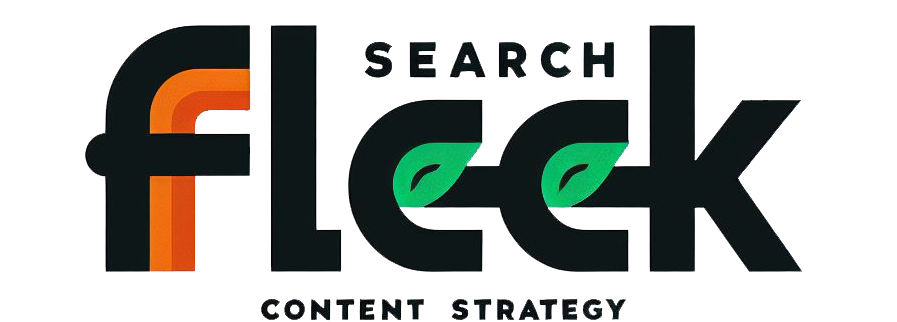In today’s competitive financial landscape, standing out as a trusted advisor requires more than just expertise. A strong online presence is crucial for attracting new clients and fostering trust with existing ones. But coming up with fresh blog content ideas week after week can feel like a challenge.
Fear not, financial friends!
50 blog topics for financial advisors
Content to Attract New Clients:
- Choosing the Right Financial Advisor: A Guide for [Target Audience] (e.g., Young Professionals, Families, Retirees)
- The Benefits of Working with a Financial Advisor (Highlight the value you provide)
- 5 Signs You Need a Financial Advisor (Address common pain points)
- What to Look for When Choosing a Financial Advisor (Build trust and credibility)
- Financial Planning FAQs: Your Questions Answered (Educate and position yourself as an expert)
- Common Financial Mistakes to Avoid (Showcase your knowledge and value)
- Investing for Beginners: A Simple Guide (Attract new investors)
- The Importance of Building an Emergency Fund (Offer practical advice)
- Understanding Different Retirement Accounts (Educate on options like IRAs and 401(k)s)
- Strategies for Paying Off Debt Faster (Cater to a common financial concern)
Content to Educate Existing Clients:
- Market Update: [Current Market Trend] and Its Impact on Your Portfolio (Offer ongoing guidance)
- Tax Planning Tips for [Current Year] (Provide timely and relevant advice)
- Estate Planning Essentials: Protecting Your Legacy (Address long-term concerns)
- The Power of Compound Interest for Building Wealth (Explain financial concepts)
- Financial Planning for College: Strategies for Saving (Cater to specific needs)
- Navigating Financial Planning During a Recession (Offer reassurance and guidance)
- Retirement Planning for a Secure Future (Help clients achieve their retirement goals)
- Understanding Risk Tolerance in Investment Strategies (Personalize investment plans)
- The Benefits of Rebalancing Your Investment Portfolio (Offer ongoing portfolio management advice)
- Financial Planning for Small Business Owners (Expand your client base)
Building Trust and Authority:
- A Day in the Life of a Financial Advisor (Offer a behind-the-scenes look)
- Meet the Team: Your Trusted Financial Partners (Introduce your team and expertise)
- Financial Planning Myths Debunked (Address common misconceptions)
- Client Success Stories: How We Helped Achieve Goals (Build trust through testimonials)
- The History of Financial Planning: How the Industry Evolved (Showcase industry knowledge)
- Financial Planning for [Specific Niche] (e.g., Millennials, Women Investors) (Cater to niche audiences)
- Financial Wellness Tips for a Healthy Lifestyle (Offer holistic financial guidance)
- Financial Planning for Charitable Giving (Highlight your values)
- The Importance of Cybersecurity for Financial Security (Educate on online safety)
- Financial Planning Resources: Books, Websites, and Tools We Recommend (Position yourself as a valuable resource)
Engaging Your Audience:
- Ask Me Anything: A Q&A Session with a Financial Advisor (Spark audience interaction)
- Financial Quiz: Test Your Money Knowledge (Make learning fun and engaging)
- Live Webinar: Discussing [Relevant Financial Topic] (Provide valuable content and position yourself as an expert)
- Financial Planning Case Studies (Showcase your problem-solving skills)
- Host a Financial Planning Challenge (Motivate action and engagement)
Going Beyond the Blog:
- Develop Downloadable Resources: Create informative ebooks, white papers, or investment guides that users can download in exchange for their contact information. This helps build an email list for future marketing efforts.
- Create Engaging Social Media Content: Share bite-sized financial tips, infographics, or short explainer videos on platforms like Facebook, Twitter, and LinkedIn.
- Develop a Podcast or Video Series: Offer in-depth discussions on relevant financial topics featuring yourself or other financial experts.
- Host Financial Workshops or Seminars: Provide valuable in-person learning experiences for potential
- Partner with Local Businesses: Offer co-branded financial workshops or events relevant to their clientele (e.g., workshops on financial planning for small businesses at a co-working space).
Engaging Your Audience:
- Financial Planning for Different Life Stages: Tailor content to address specific financial concerns at different points in life (e.g., budgeting for young adults, saving for retirement).
- Financial Planning for Unexpected Events: Discuss strategies for managing job loss, medical emergencies, or natural disasters.
- Create Financial Planning Checklists: Offer downloadable resources that guide users through specific financial planning tasks (e.g., retirement planning checklist).
- Run Financial Planning Contests or Giveaways: Generate excitement and engagement by offering incentives for participating in financial planning activities.
- Respond to Comments and Questions: Show your audience you care by promptly addressing their inquiries and engaging in conversations.
Building Relationships and Growing Your Business:
- Offer Free Consultations: Provide a low-barrier entry point for potential clients to learn more about your services.
- Host Client Appreciation Events: Foster loyalty and build relationships by hosting events for existing clients.
- Develop a Referral Program: Encourage existing clients to refer their friends and family by offering incentives.
- Track Your Results: Monitor key metrics like website traffic, lead generation, and client acquisition to analyze the effectiveness of your content marketing strategy.
- Guest Blogging: Contribute guest posts to other financial websites or blogs to reach a wider audience and establish yourself as an expert.
Additional Content Ideas:
- The Future of Financial Planning: Trends and Innovations (Discuss emerging technologies and their impact on the industry)
- Financial Planning for Expats (Cater to a niche audience with specific financial needs)
- The Ethical Considerations of Financial Planning (Address ethical investing and socially responsible financial products)
- Financial Planning for Solopreneurs and Freelancers (Offer guidance for those with non-traditional income sources)
- Financial Planning for People with Disabilities (Discuss strategies for managing finances with unique challenges)
- Debunking Common Investment Scams (Educate clients on how to protect themselves from fraud)
- The Role of Financial Planning in Achieving Your Dreams (Connect financial planning with personal goals)
- Financial Planning for a Sustainable Lifestyle (Discuss eco-friendly financial practices)
- The Psychology of Money: How to Overcome Behavioral Biases (Explore how emotions can influence financial decisions)
- Financial Planning for a Work-Optional Lifestyle (Address the growing trend of early retirement)
With this comprehensive list of 60 blog post ideas, you can create a content calendar that attracts new clients, educates existing ones, and positions yourself as a trusted financial advisor in the digital age.
Crafting Compelling Financial Advisor Blog Content: Tips for Success
This list provides a springboard for your financial advisor blog content strategy. Remember to tailor the topics to your specific expertise and target audience. Here are some additional tips to optimize your blog for success:
- SEO Optimization: Research relevant keywords and incorporate them naturally throughout your posts to improve search engine ranking.
- High-Quality Content: Offer valuable, informative, and engaging content that educates, entertains, and inspires your audience.
- Visually Appealing: Include high-quality images, infographics, and videos to break up text and enhance user experience.
- Clear Calls to Action: Encourage readers to take action, such as scheduling a consultation, downloading a resource, or subscribing to your newsletter.
- Content Consistency: Publish fresh blog posts regularly (weekly or bi-weekly is ideal) to maintain audience engagement and establish yourself as a thought leader in the financial industry.
- Promote Your Blog: Share your content across social media platforms, email marketing campaigns, and relevant online communities.
- Guest Blogging: Contribute guest posts to other financial websites or blogs to reach a wider audience and establish yourself as an expert.
Expanding Your Reach: Content Marketing Strategies Beyond the Blog
While a blog is a powerful tool, it’s just one piece of the content marketing puzzle. Consider these additional strategies to amplify your reach and connect with your target audience on multiple platforms:
- Develop Downloadable Resources: Create informative ebooks, white papers, or investment guides that users can download in exchange for their contact information. This helps build an email list for future marketing efforts.
- Create Engaging Social Media Content: Share bite-sized financial tips, infographics, or short explainer videos on platforms like Facebook, Twitter, and LinkedIn.
- Develop a Podcast or Video Series: Offer in-depth discussions on relevant financial topics featuring yourself or other financial experts.
- Host Financial Workshops or Seminars: Provide valuable in-person learning experiences for potential clients.
- Partner with Local Businesses: Offer co-branded financial workshops or events relevant to their clientele (e.g., workshops on financial planning for small businesses at a co-working space).
The Compass to Content Success: Why SEO Blog Topic Research Matters
Before launching into your next blog post, take a moment for strategic direction. SEO blog topic research acts as your compass, guiding you towards content that resonates with your audience and search engines alike.
By uncovering the keywords people use to find information related to your niche, you can tailor your content to address their specific needs and questions. This not only attracts organic traffic but also positions your blog as a valuable authority within search results.
Imagine it as a map leading you to the conversations already happening online, ensuring your content speaks directly to what people are actively seeking.
Building Relationships and Growing Your Business
- Respond to Comments and Questions: Show your audience you care by promptly addressing their inquiries and engaging in conversations.
- Offer Free Consultations: Provide a low-barrier entry point for potential clients to learn more about your services.
- Host Client Appreciation Events: Foster loyalty and build relationships by hosting events for existing clients.
- Develop a Referral Program: Encourage existing clients to refer their friends and family by offering incentives.
- Track Your Results: Monitor key metrics like website traffic, lead generation, and client acquisition to analyze the effectiveness of your content marketing strategy.
Frequently Asked Questions (FAQ) About Financial Advisor Blogs
A: Aim for consistency. Posting weekly or bi-weekly ensures fresh content and keeps your audience engaged.
A: While longer content allows for in-depth exploration, shorter, informative posts (500-700 words) are ideal for capturing attention spans online.
A: Track key metrics like website traffic, user engagement (likes, comments, shares), and leads generated to analyze the effectiveness of your content strategy.
By creating a valuable and engaging blog, utilizing diverse content formats, and actively building relationships, you can attract new clients, retain existing ones, and establish yourself as a trusted financial advisor in the digital age. So, unleash your creativity, leverage the power of content marketing, and watch your financial advisor business thrive!
Conclusion: Building Trust and Standing Out in a Competitive Landscape
The financial services industry is brimming with competition. But by consistently delivering valuable content, establishing yourself as a trusted advisor, and fostering strong relationships with your audience, you can carve out a unique space for yourself.
Unveiling the secrets of financial advisor! Before you start crafting your masterpiece, creating a strategic content outline is crucial. This roadmap ensures your blog post targets the right keywords organically, identifies potential areas for captivating visuals, and ultimately delivers a content piece that attracts your ideal audience and ranks higher in search results.
Remember, the key lies in understanding your target audience’s needs, tailoring your content accordingly, and utilizing a variety of platforms to reach them effectively. Embrace the power of content marketing, let your expertise shine through, and watch your financial advisor business flourish in the digital age!
Emon Anam, CEO of Search Fleek, isn't your typical digital guru. He brings a unique blend of financial expertise (former banking pro!) and digital marketing mastery to the table. A self-proclaimed "SEO Sherlock Holmes," Emon unlocks content secrets for local businesses and SaaS companies. But beyond the keyboard, he's a devoted family man, music enthusiast, and cricket champion. Let Emon weave your digital success story!




